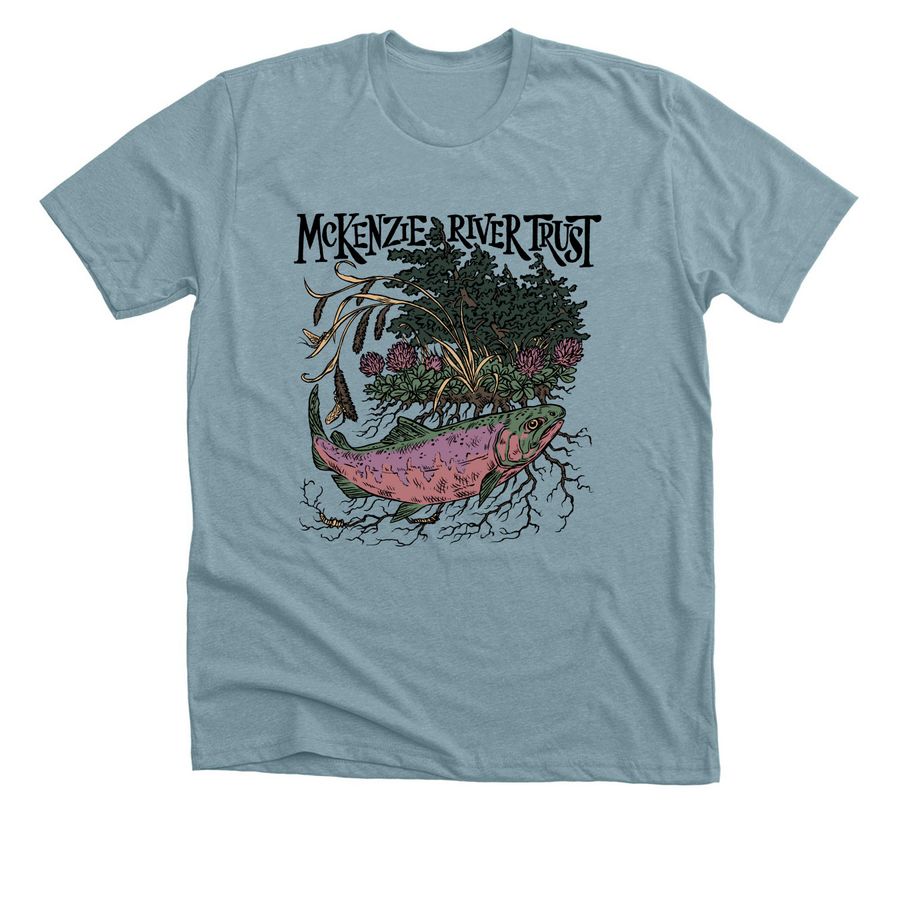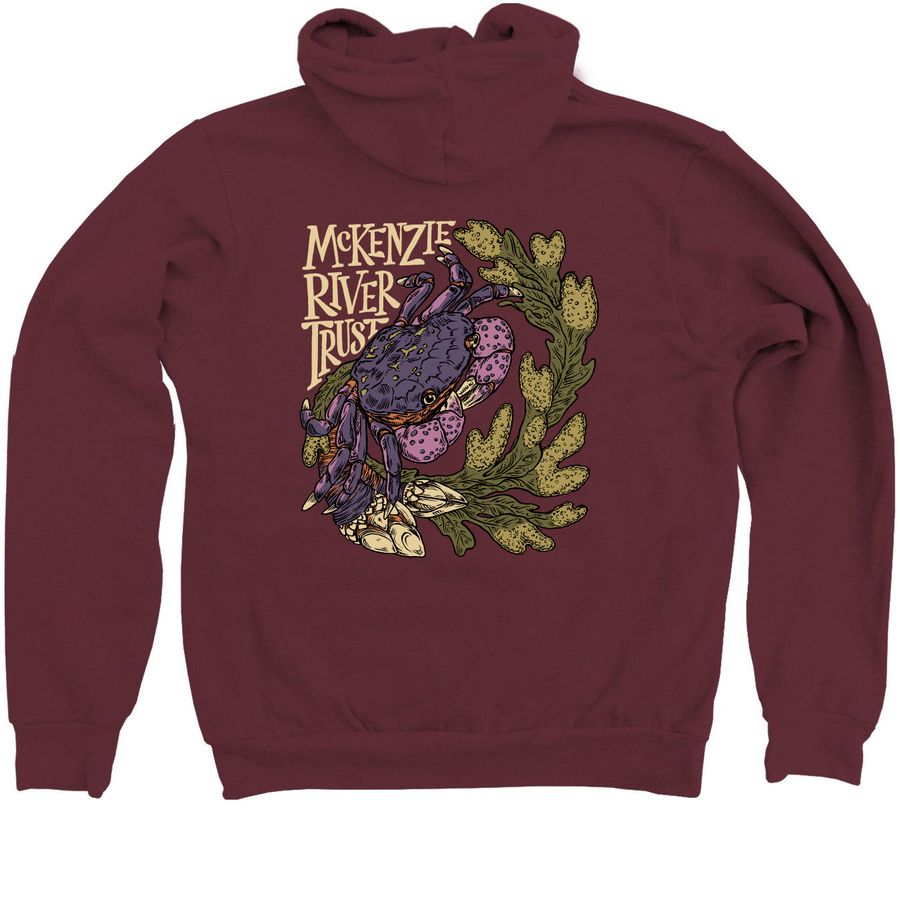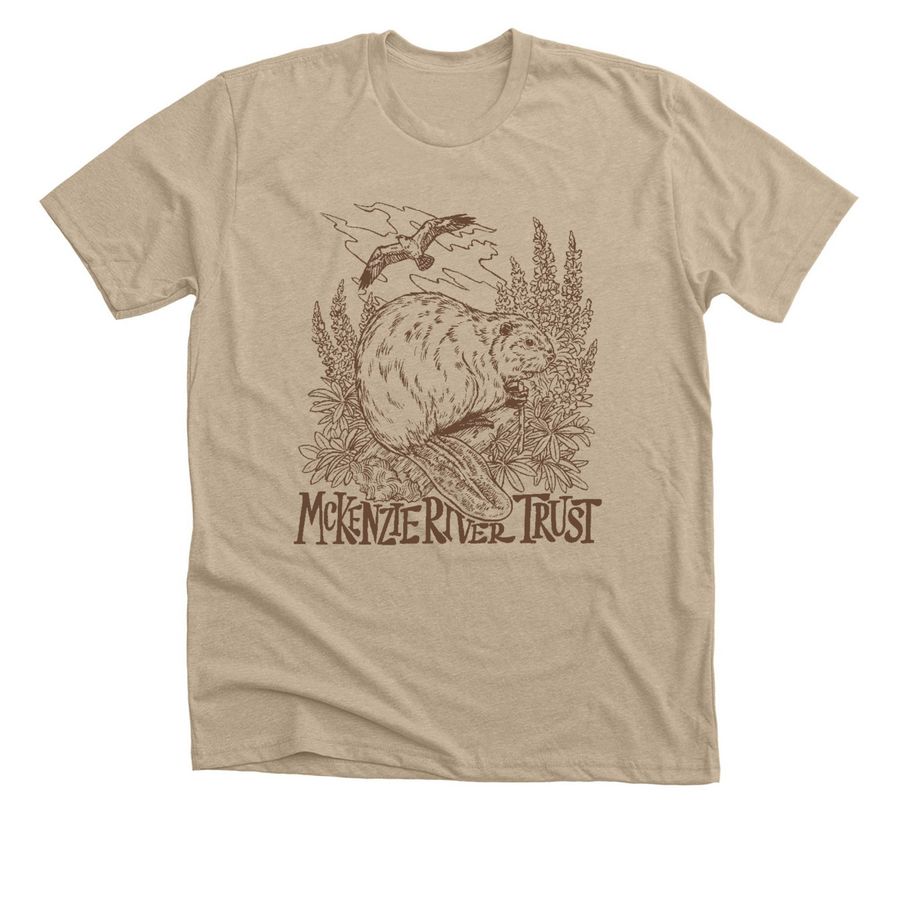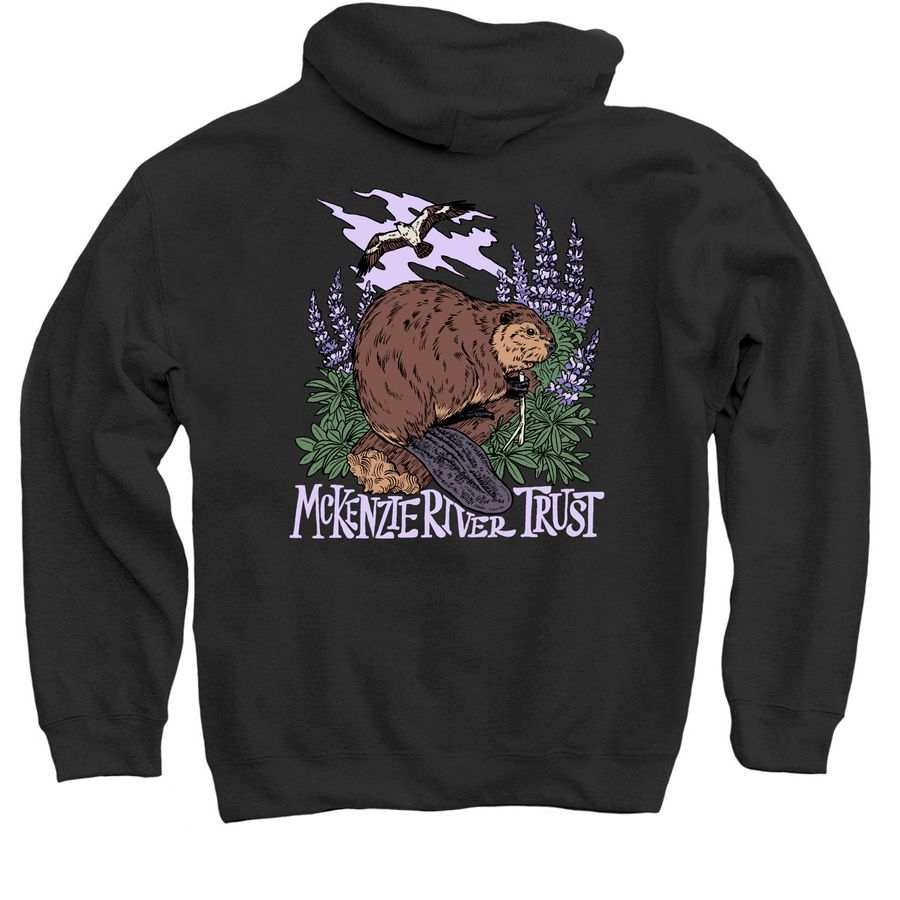By Garrett Reagan, Outreach and Communications Intern
McKenzie River Trust works at the intersection of people and place. Across the conservation sector, our collective understanding of exactly what that means is deepening through the intentional probing of our history on the land and the impacts of settler colonialism on communities of non-European descent in the United States.
Within mainstream outdoor communities, the voices of marginalized groups surrounding land use, agriculture, and outdoor recreation are not widely shared. Yet living where policy has historically excluded Black, Indigenous, People of Color (BIPOC), and LGBTQIA+ community members from a range of interactions with the land, it is critical that we seek out an increasingly diverse range of voices when considering the many ways that people cherish the lands and rivers of western Oregon. Incorporating perspectives from marginalized communities into conversations surrounding land means listening to, learning from, reflecting upon, and amplifying those voices.
Early this summer, Garrett Reagan, an Outreach and Communications Intern with McKenzie River Trust, set out to connect with and learn from three Eugene community members working to deepen connections between people and place in Lane County.
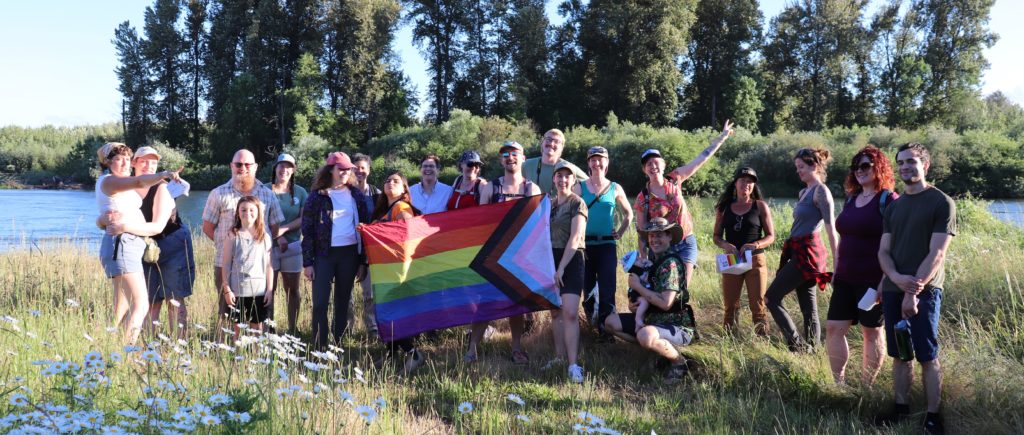
"Are Our Parks Diverse?" A Study on Diversity in Eugene's Outdoors
Interview with Taylor Bowden
In 2021, Taylor Bowden completed a year’s worth of research for her landscape architecture master’s program at the University of Oregon. The project was built upon interviews Bowden conducted with Black, Indigenous, and Latinx populations in Lane County.
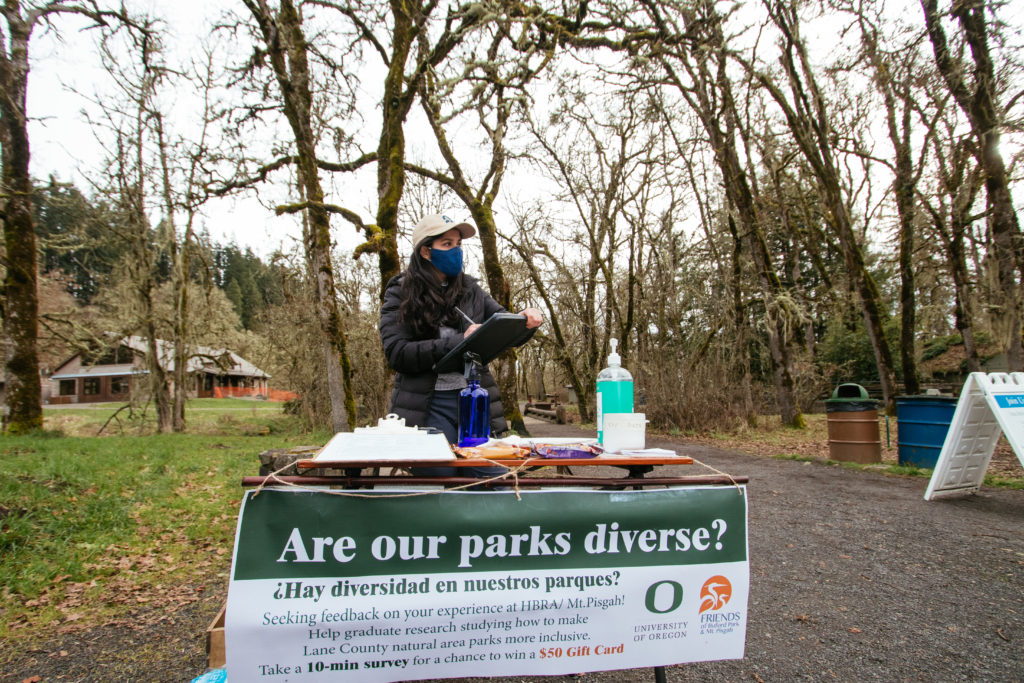
Interviews included conversations surrounding personal identity and barriers to recreating within natural spaces. Her fieldwork began by bearing a provocative sign at the trailheads of Mt. Pisgah asking the question in large, bold print, “Are our parks diverse?.” The sign sparked an array of conversations. Some park visitors did not believe that lack of diversity in the outdoors was a problem while others took time to share their allyship through deeper conversations. Taylor shares, “I went on-site to Howard Buford Recreation Area; my initial idea was to use this as a case study site to implement design interventions to become more welcoming for Black, Indigenous, and People of Color (BIPOC). I had to shift after realizing there was not enough BIPOC individuals present within the park to have enough data even to suggest changes. Then, I had to go out into the community to find people who wanted to talk about why I was seeing this lack of diversity on public lands.”
After compiling a list of definitive barriers presented by a study group of 13 BIPOC community members, the results led to a tool kit for organizations generated by the words of the individuals. Taylor emphasized, “A really important piece is trying to make sure I was giving these voices a platform, they just needed someone who can get it to the right people and disseminate it in an easily digestible way.”
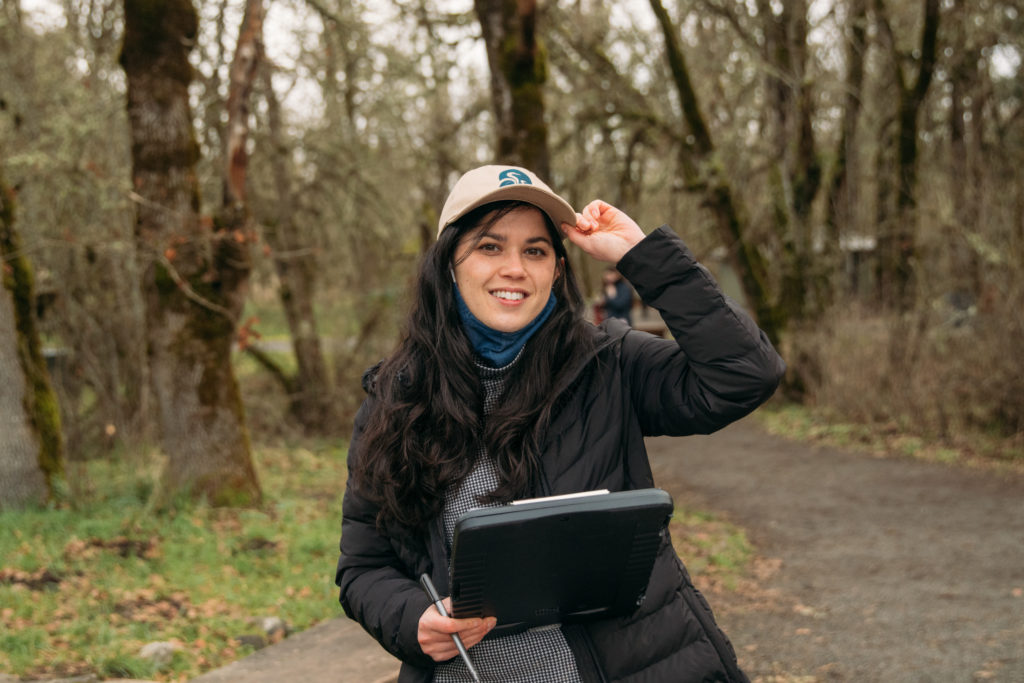
When chatting with an Indigenous community member, she had an epiphany regarding the disconnect between cultures and the language used to describe “outdoor recreation”. Taylor summarized a conversation held with this individual “To them ‘outdoor recreation’ insinuates using the land as a playground, rather than a place to be respected that has sovereignty. Within that little misunderstanding of a word, we lose so much wealth of understanding and there is a total disconnect between two cultures.
For them, the land is connected at all times to their life, not just for recreation. This small disconnect in language is symbolic of the many barriers land managers face in unifying our collective understanding of people and place and supporting the different needs and perspectives of people in our community.
The most surprising thought evolution for Bowden was the longstanding history of iconized individuals within outdoor communities. These central characteristics of what it means to be outdoorsy have perpetuated the values of a rugged, adventurous, treacherous outdoorsman. This interpretation is ultimately a narrative of predominantly white men who are set against the outdoors as a place to ‘conquer.’ “Through this popular narrative we don’t get to hear from Black folks who have built the land, Indigenous folks who have stewarded the land since time immemorial, and the Latinx migratory workers who are working our land without any recognition. For so long we haven’t heard from these people… we need to integrate their perspectives on the land if we want to have sustainable land practices.”
Since finishing her Master’s Degree, Taylor served as a fellow with the National Park Service’s Rivers, Trails, and Conservation Program aiding the Rivers to Ridges Partnership, a voluntary association of 19 organizations working collaboratively to advance the protection, restoration, and effective management of park and open space resources in the southern Willamette Valley. Her master’s project and work are already informing land and water planning for public spaces and conservation initiatives in our region. McKenzie River Trust and our partners in the Upper Willamette Stewardship Network are utilizing Taylor’s report to help inform how we develop and implement programming on lands protected and cared for by MRT.
"Redefining Outdoorsy" program builds community at the University of Oregon
Interview with Genevive Slaton
Genevieve Slaton, an Afro-Indigenous member of the Blackfoot and Narrangansett tribes recently graduated from the University of Oregon. At UO she participated in the Outdoor Program BIPOC-affinity excursions, a program aptly named, “Redefining Outdoorsy.” While describing her experience taking adventure trips with other BIPOC students she lit up: “The energy is extremely ecstatic,” she describes, “everyone is excited to be interacting with the land together.” She shares the incomparable energy that engulfed the group on a trip to the McKenzie River’s Blue Pool, how being together freed them of the perceptions of a white gaze and allowed a level of attention to the land that she had never before experienced in a group.
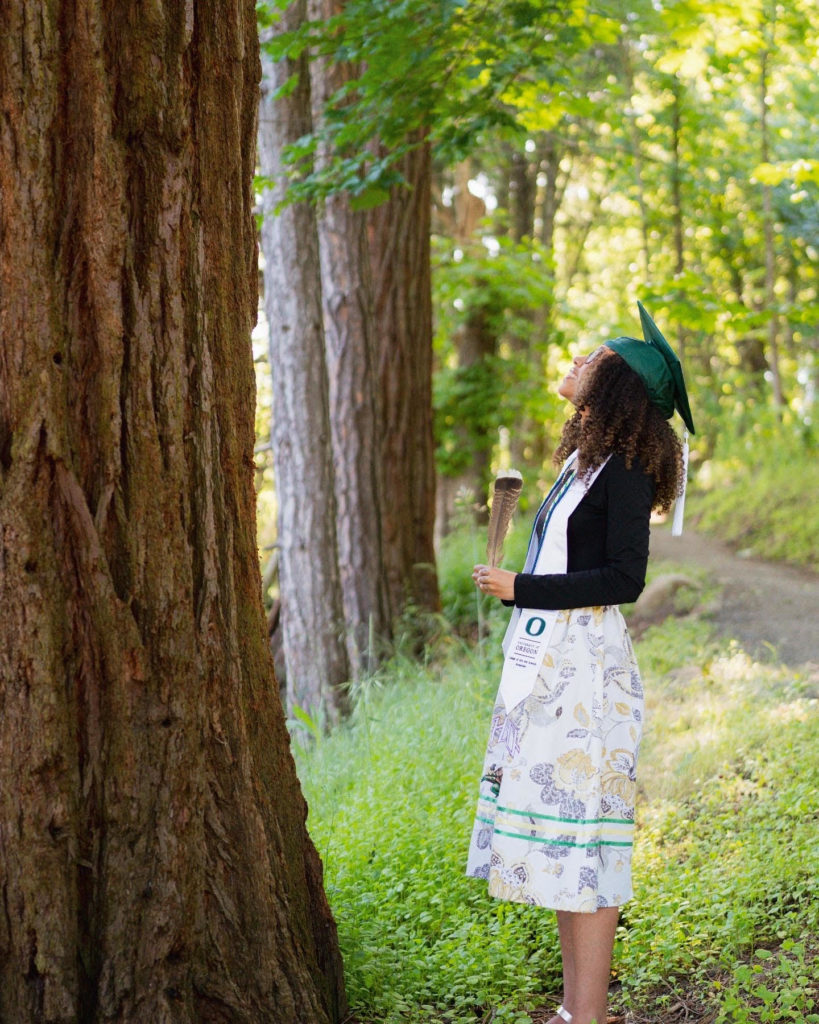
When asked about her experience recreating in the outdoors, Ms. Slaton described a dichotomous experience: the isolation felt while camping and the importance of Native fellowship in the outdoors. On a camping trip she and a family member gradually realized they were the only People of Color within the campground, leaving them uneasy in that outdoor space. While drifting off to sleep, they began to hear a drum circle in the distance. Peeking out of the tent flap they were greeted with a fire, and realized that there was a Native drum circle taking place. “I wanted to cry,” she explained, “this is exactly what we needed, I felt so safe at that moment, and it completely changed the whole trip.”

When she discusses how these outings have changed her perspective on land, she describes a longing for more BIPOC representation within farming, gardening, and outdoor recreation. “Being with other BIPOC people on these trips made the land feel so much more sacred, I felt so much more observant…so much more grateful for everything around me…I feel like the land is happy when we are happy.” Ms. Slaton continues, “The world would be a different and better place if there were not only more inclusive outdoor spaces but if we could show people the way we practice respecting and honoring the earth. When we all practice the reciprocal relationship between nature, we will be very well off.”
Cultivating Community Through Gardening - Land as Liberation
Interview with Heidi Osaki
Sipping coffee with Heidi Osaki, we discuss BIPOC perspectives on gardening, farming, agriculture, and how tending land directly is a critical and radical step in BIPOC liberation. Ms. Osaki, a community gardener, and organizer of For the Peoples Garden, a BIPOC-led community garden in Eugene, describes the importance of BIPOC spaces that focus on food and soil. Sparked in response to the Black Lives Matter movement in 2020, the Garden was created as a place of respite for young BIPOC individuals to heal, connect, converse, and reciprocate relationships with the earth and with each other.

Heidi shared the central question that ignited the work, “How do we as BIPOC people organize ourselves in a sustainable praxis?” She continued, “The Garden became a great way to do that, it’s a community space for people to interact, to relax and paint and dig holes and plant things all while we are cultivating a relationship with the land.” It was created as a way for BIPOC individuals to continue organizing around Black Lives Matter and racial justice movements in a more innovative, nurturing, and sustainable manner that involved reciprocity with the land as well. Heidi explains, “It was created to be a revolutionary project but in the form of a garden.”
Osaki describes a perspective on land that is informed by a reciprocal relationship with fellow BIPOC community members. The Garden project has served as a connector for BIPOC community members both in and outside of the garden. Leftover plant starts have been donated to BIPOC individuals who may not have the resources to maintain a community garden plot but want to start home gardens. Additionally, workshops have been held for community members interested in building at-home herb gardens and potlucks have brought people together to cook for the community with produce that was cultivated from the garden, and surplus food was made available to community members in need.
Heidi shares, “I got involved because I wanted that sense of community. The space it created was most important to me, the gardening and relationship with the land came after that.” She describes a perspective on land informed by community, by young queer People of Color, and shares her deep sense of connectedness and the generative space cultivated by members of the Garden – building up the soil, and each other, in the process.
Elaborating on intersectional relationships with the land, Heidi describes the fluidity that exists between people and place. “Queer people can grasp nuanced relationships and non-linear perspectives, an ability to exist outside the binary as a queer person translates to a fluid and enhanced empathy for the outdoors and an open ear for unheard stories. For the People’s Garden has become a space to share experiences and perspectives in a non-white setting, while also celebrating each of the unique communities members of the Garden come from.”
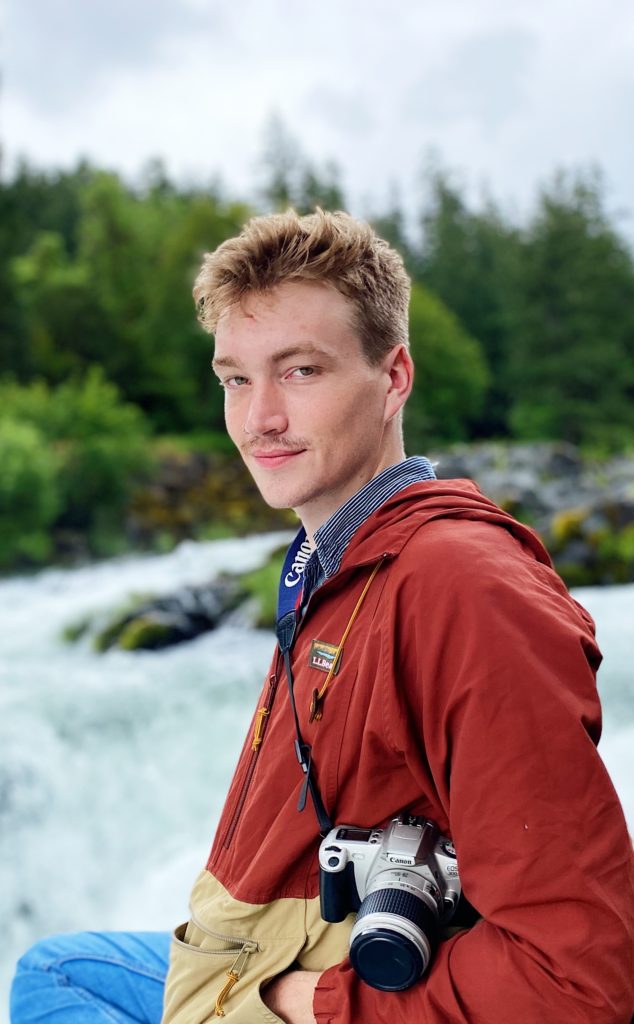
About the Author
Garrett Reagan (he/they)
A recent graduate from the University of Oregon, Garrett received a Bachelor of Science in Environmental Studies specializing in the Humanities and Environmental Justice. They strongly believe in accessibility and inclusivity within the natural world and strive to curate environments and opportunities that reflect these values and foster local investments in serving underrepresented communities. Recognizing that we are on stolen land and recognizing their own stake as a white individual within a settler colonial society, Garrett seeks to amplify the voices of marginalized peoples within Lane County and re-center environmental conversations toward the historic stewards of this land.

